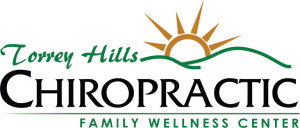Timing…The Key to Success for Dance & Life
In dance, everything is timing. You hear it each time you walk through the classroom or rehearsal hall…5, 6, 7 8! To be in perfect time will more likely translate into a perfect performance.
Another kind of “timing” also contributes to a dancer’s progress and success. That one deals with the battle all of us have had with the clock from time to time. All of us run late sometimes, but it seems as though in recent years, tardiness to class and being unprepared once arriving to class is becoming an epidemic.
 Hey, I know. My wife, Tanya and I raised four very active children; all involved in extracurricular activities spread throughout San Diego with the both of us, acting as their chauffeurs making sure everyone made their events all the while handling full time jobs as dance studio owners, working instructors and choreographers. The days tended to blend into a flurry of traffic lights, honking horns, kids screaming and the smell of McDonald’s French fries wafting through the car. I can say that 99% of the time, our children were on time, prepared and ready to roll once at the destination. That’s not the trend we are seeing in our classrooms. I bet if we are seeing it in our classrooms, this behavior is continuing through in school and other activities.
Hey, I know. My wife, Tanya and I raised four very active children; all involved in extracurricular activities spread throughout San Diego with the both of us, acting as their chauffeurs making sure everyone made their events all the while handling full time jobs as dance studio owners, working instructors and choreographers. The days tended to blend into a flurry of traffic lights, honking horns, kids screaming and the smell of McDonald’s French fries wafting through the car. I can say that 99% of the time, our children were on time, prepared and ready to roll once at the destination. That’s not the trend we are seeing in our classrooms. I bet if we are seeing it in our classrooms, this behavior is continuing through in school and other activities.
When we see dancers that arrive late as a norm, it eventually takes a toll on the dancer’s overall class experience. Since many of these students not only arrive late, but without the proper tools to begin instruction; hair in place, correct attire, dance shoes, these dancer’s tend to feel that they are always a step behind their peers and they tend to struggle with exercises and concepts that come easily to those dancer’s showing up to class on time and prepared to work. Most of these late arriving students begin each class with negative feelings, “I’m late, everyone already knows what we’re doing”; “I’m never going to catch up now” and others that tend to breed more negative feelings which influence the classroom experience, how they feel about themselves and ultimately, the end result. That end result is usually a negative one of his or her time spent in class.
Most dance classes are run in an organized, scheduled and mostly predicable manner. Dancers depend, especially our youngest dancers, on the structure of the hour. They relish in knowing where they have to be, when and what is going to happen next. The main purpose of a dance class is to learn dance in a manner that is routine, that creates muscle memory. When dancers are late, this routine way in which the class is conducted is disrupted and dancers who are often late or unprepared have trouble settling in and really grasping the full benefit of the class. Tardiness and the feeling of being unprepared can throw off their whole day, especially if the late commute from school or home was stressful. These dancers many times break into tears at the drop of the hat and many eventually drop an activity that once filled them with joy.
Parents don’t see how the development in patterns such as being late to dance class, the baseball field, music lessons and/or school are setting lifelong patterns for their children. It is important for parents to realize, no matter how bad work was, or the alarm went off late, or you couldn’t find your keys, it is their responsibility to teach their children good work ethic and learning tools to meet the expectation of the class or activity is to be on time. Timely attendance shows children how to be responsible for their own obligations. They need a parent’s help with this from teaching their children and teens good organizational techniques that will help them to get out of the house or school faster. Teaching dancers to be responsible by packing dance bags with the appropriate attire and hair accessories for class and planning how the transition from home or school will work to their advantage.
It’s paramount that parents play their part. Children and some younger teens are not able to ‘drive’ themselves, so parents must be punctual and responsible. How you model today translates into how successful your dancer or child will be when going to that first audition, that first college interview or that first job interview. After all, parents are the primary role model. Make it your goal to model success in every day events.
______________________________________________________________
Louis McKay is President of North County DanceArts, Inc. located in Carmel Valley and currently trains 400 students from ages 3 to 93 years of age. Louis has performed and taught Master dance and musical theater classes in 42 of our 50 states and Europe and South Africa. In 1980, Louis McKay opened Louis McKay Dance Studio, later to become North County DanceArts, Inc., which is a teaching facility that is best known for its professional teaching staff and quality dance training. Dancers from beginning level to professional are taught technique, terminology, and discipline in a nurturing and fun environment. Louis currently lives in Carmel Valley San Diego with his wife Tanya and is the proud father of four grown children and two grandchildren. Louis and Tanya McKay also own DanceHearts, a 501 (c) (3) Public Charity called Bells of Freedom Program, serves military men, women and their families by providing emergency care and support, back to school backpack program, vehicle donations and the annual “The Big Thank You” Military Holiday Event.











You must be logged in to post a comment Login